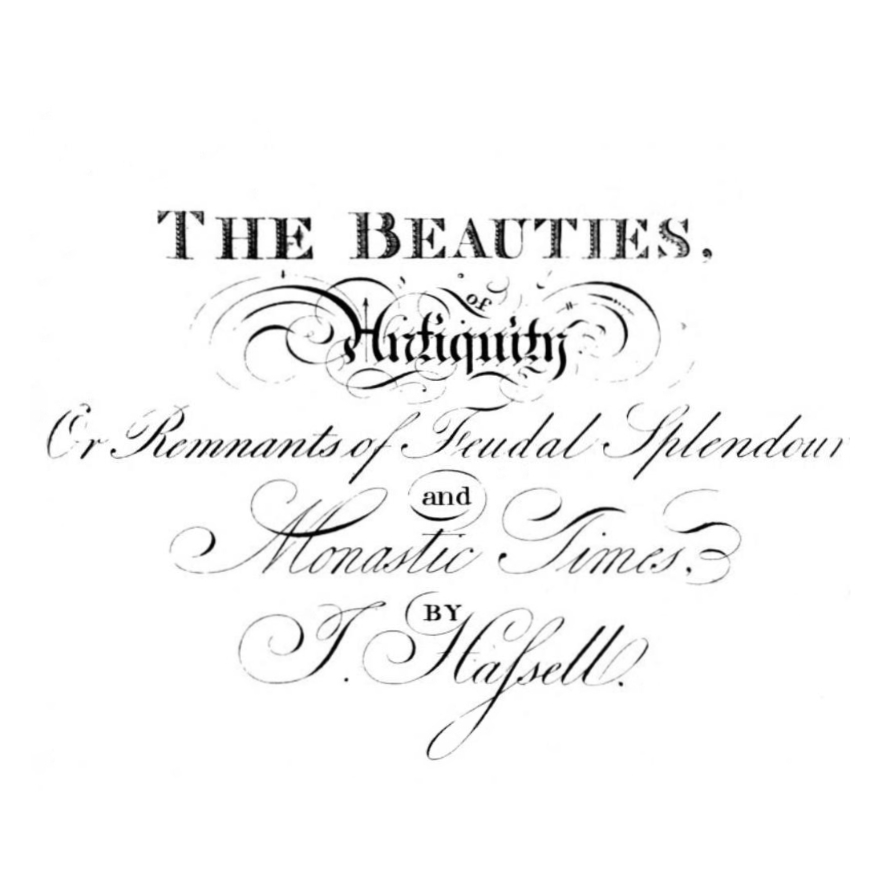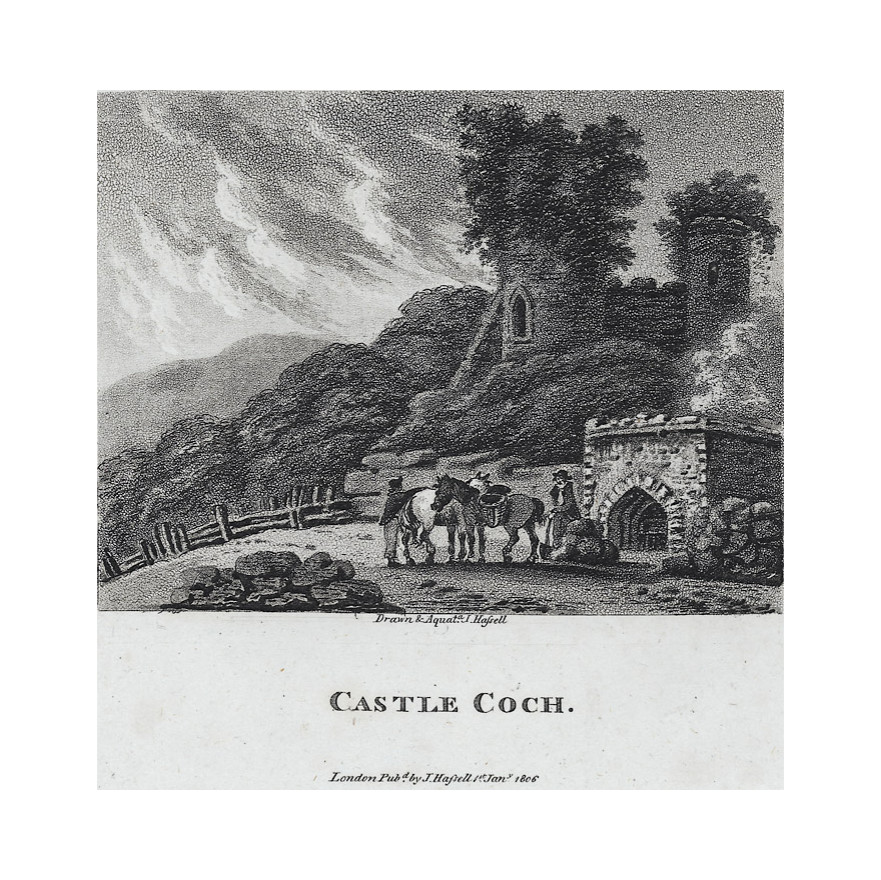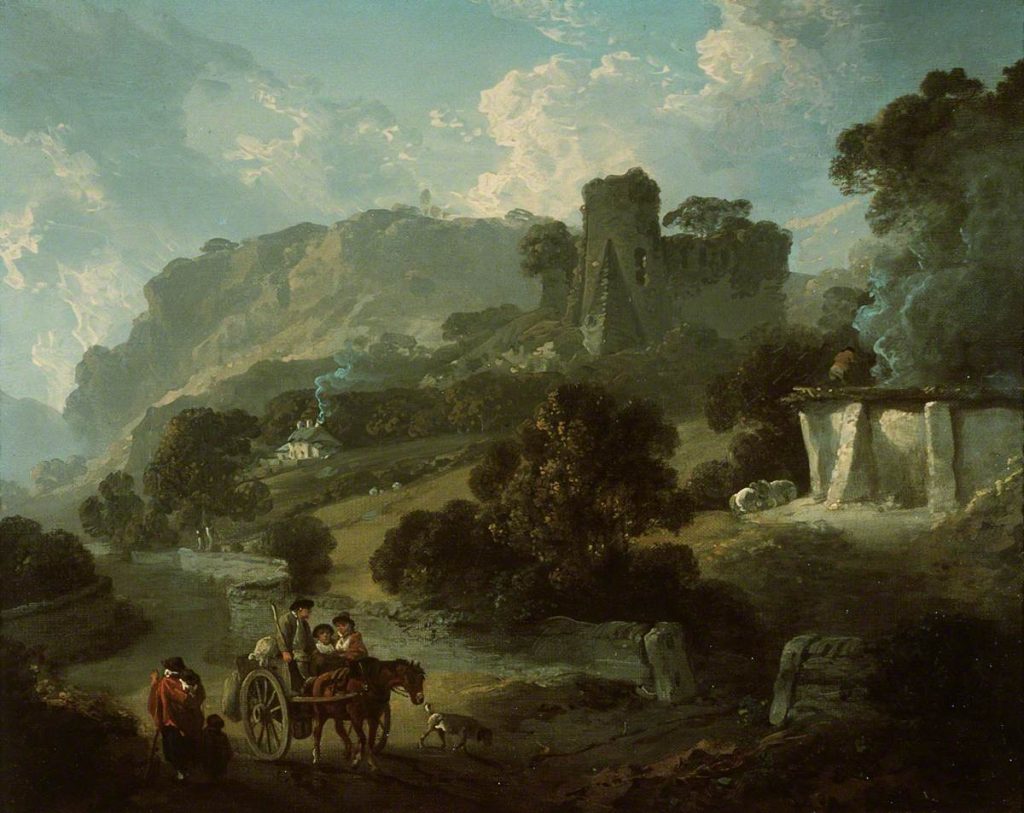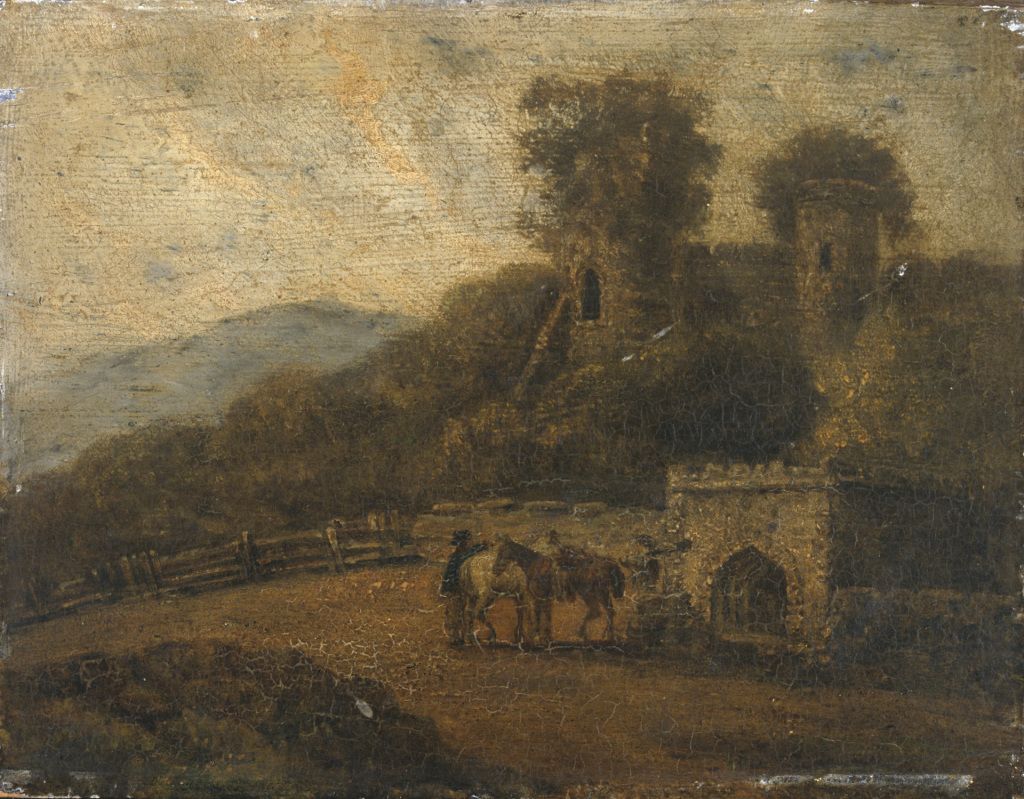John Hassell was an English watercolour landscape painter, engraver, illustrator, writer and publisher. “The Beauties of Antiquity Or Remnants of Feudal Splendour and Monastic Times” was published in 1806 and contains a fantastic illustration of Castell Coch.
There’s a short description of the castle and some of its history.
The magnificence of its front is peculiarly attractive, and serves to throw a light on its former fame.
J Hassell – 1806
Title Page
The inner page of the book contains some beautifully ornate calligraphy that suits the lengthy title.
(You may notice that John Hassell’s surname looks like “Hafsell”. The “f” is actually a “Long s” and there’s a detailed Wikipedia article if you’re interested!)

Illustration
The illustration includes the text, “Drawn and Aquat. J. Hassell”. I was really confused by the abbreviation “Aquat.” but a quick search showed that it’s short for “Aquatint”, an artistic technique popular at the time.
Aquatint is an intaglio printmaking technique, a variant of etching that produces areas of tone rather than lines. For this reason it has mostly been used in conjunction with etching, to give both lines and shaded tone. It has also been used historically to print in colour, both by printing with multiple plates in different colours, and by making monochrome prints that were then hand-coloured with watercolour.
It has been in regular use since the later 18th century, and was most widely used between about 1770 and 1830, when it was used both for artistic prints and decorative ones. After about 1830 it lost ground to lithography and other techniques.
Wikipedia

The view shows an interesting building in the foreground. This is a lime kiln and also appears in Julius Ibbetson’s “Return from Market” (1808), which is based on the artist’s watercolour from 1792.
Hassell co-authored a book with Ibbetson in 1793 so the artists knew each other.

Hassell’s illustration features a stone arch over the “draw hole”, where the lime was extracted. Ibbetson’s kiln looks very different.
Description
Castlecoch; or The Red Castle
Cardiganshire
This castle is named Castlecoch, and supposed to have been erected to defend the pass of the river; though its situation is certainly ill-judged, on account of the hill which commands it.
The access is difficult, not only from its stupendous height, and being overgrown with bushes, but the barrier of loose stones, which once composed a part of its fabric, is now formed as a wall; and, strange to relate! every step appeared to have been taken to impede an explorer.
The interior presented one series of desolation; and, though there is a pleasure in wandering over a mouldering pile, the gloomy monument of departed fame robbed it of the usual gratification, and excited a solemnity: trees and shrubs became the residents of its courts, and its ruined walls were obstructed from the eye by a darkening veil of ivy, that rendered it difficult, from its dilapidated state, to trace its former extent.
The magnificence of its front is peculiarly attractive, and serves to throw a light on its former fame: but, on researching this noble remain, I was amply rewarded; and pleasure resumed its gratification, by a view from its large broken window, presenting such a variety of coundess charms, beyond the reach of description or delineation: the scene was diversified in every fanciful form that embraces the most pleasing features of landscape, adorned with a river, winding through a rich and high cultivated tract, ornamented with a view of Cardiff, Landaff, and numerous other interesting objects, until it reaches the broad expanse of the Bristol channel; the whole forming a charming assemblage of choice and variegated beauties.
There is scarcely any knowledge to be gained of this place; but some relate a story somehow connected with it: That, when Jestyn-ap-Gwrgwn, a prince of Glamorganshire, lived at Cardiff Castle, Castlecoch, or The Red Castle, was inhabited by a petty prince, named Ivor-Bach, or Little Ivor, a short resolute man: a mutual love having been formed with one of Jestyn’s daughters, he applied to her parents for consent, which was refused; Ivor, justly considering that life is undesirable, if separated from the object of love, collected a chosen band, stormed Cardiff Castle, and carried off his prize: the enraged father pursued, but, soon afterwards, consented to the union. Ivor-Bach was a descendant, and the last of the kings of Baycheinog; he was slain in battle, in a valley, called, after him, Pantcoed-lvor; or The Valley of Ivor’s Army.
Oil Painting
I stumbled across this image on the Museum Wales website.

Comparing both images, you can see it’s not a perfect copy. The artist has created a more realistic rendering of the scene but retained the composition and details. There’s no information on the artist or year it was painted. Hassell is not known for oil painting so perhaps this was a copy from another artist.


Sources
- Castle Coch by John Hassell from the People’s Collection Wales
- Castle Coch oil painting from Museum Wales
- Title page from Google Books


